A different league
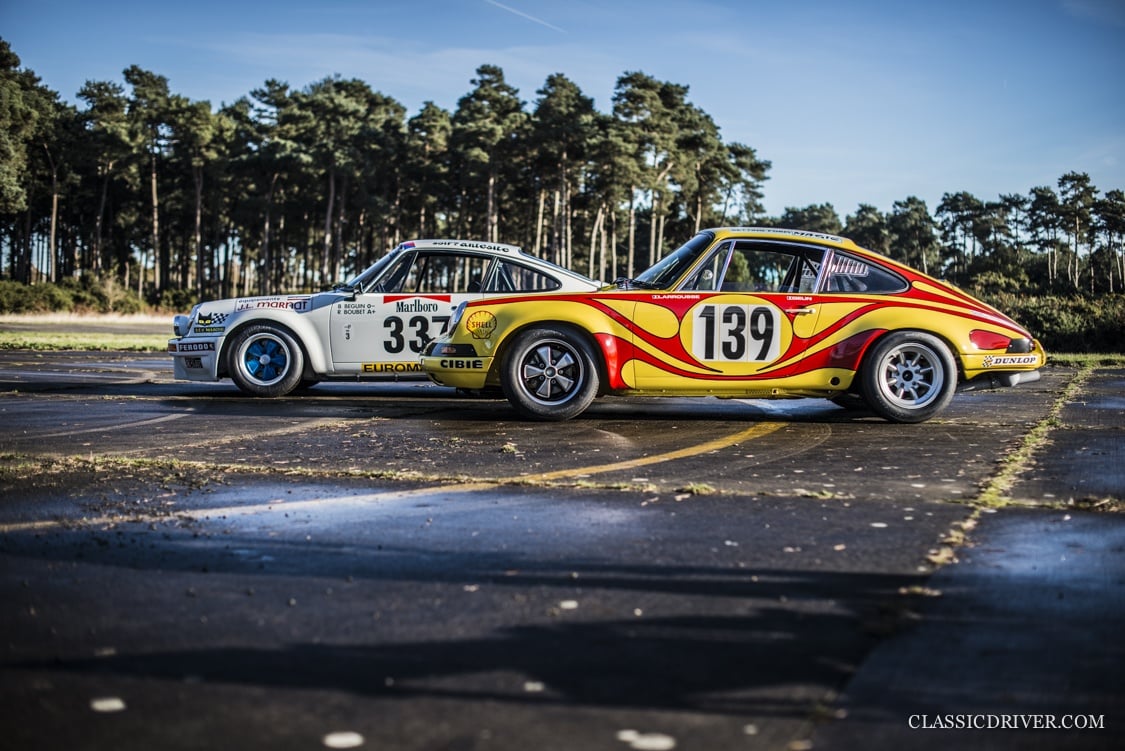
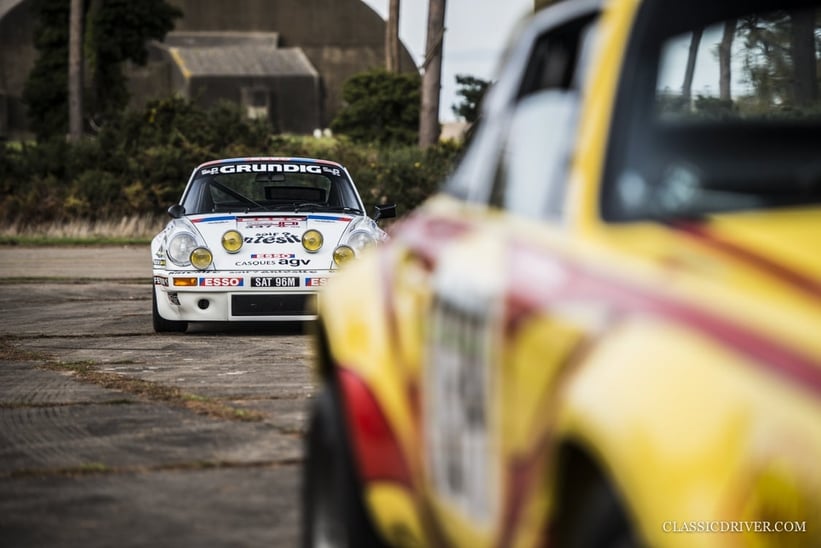
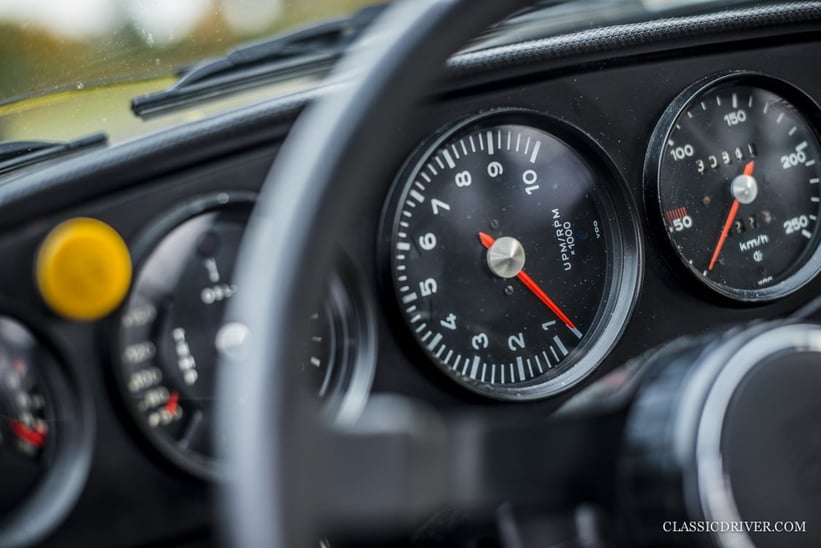
The ex-Stirling Moss, Tourist Trophy-winning Ferrari 250 GT ‘SWB’ racing at the Revival. Richard Attwood and Hans Hermann’s Porsche 917K contesting La Sarthe once again at the Le Mans Classic. ‘Super Swede’ Ronnie Peterson’s JPS-liveried Lotus dancing around the streets of Monte-Carlo at the Monaco Historic Grand Prix. While driving in a historic motorsport event in a car of the type that competed in period is special, to take part in a car that actually raced at said event is another thing altogether.
With the 26th Tour Auto retrospective setting off from the Grand Palais in Paris today, what better timing than to explore two distinctly German veterans of the original Tour de France Auto: the ex-Gérard Larrousse Porsche 911ST and the ex-Ecurie Echappement 911 3.0 Carrera RS?
Bribery with bubbly
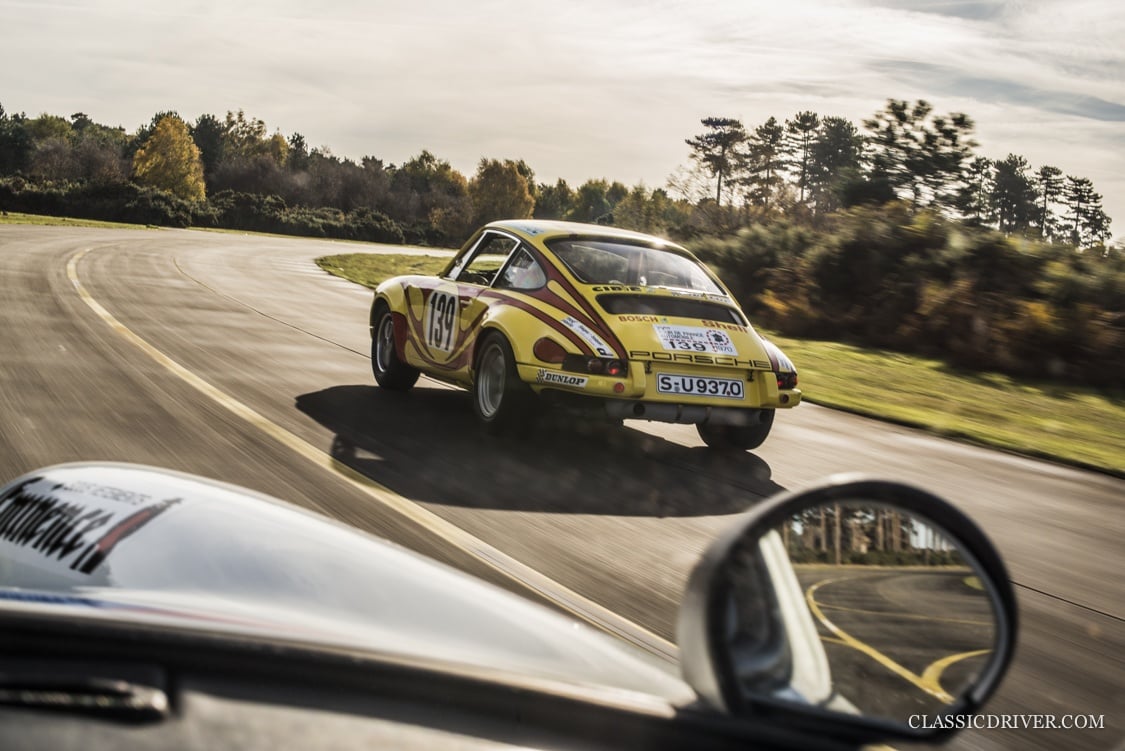

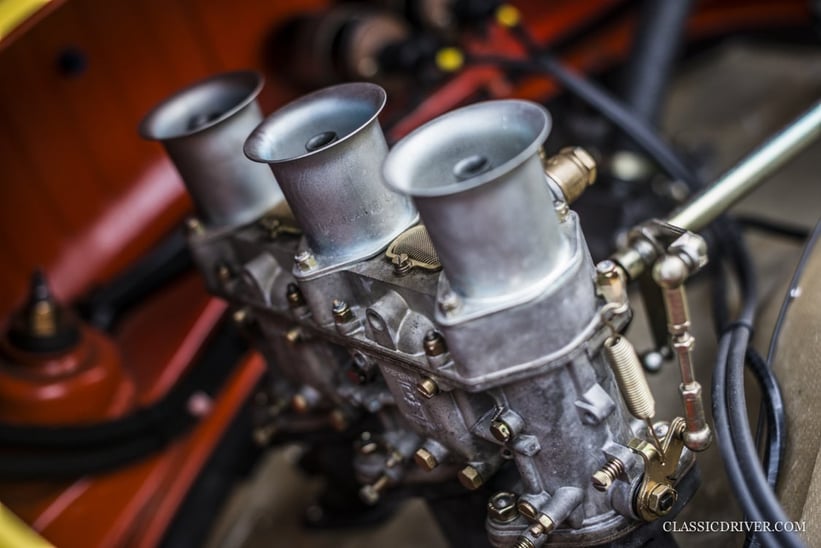
As you may well have recently read about this yellow, psychedelic-liveried Porsche 911 from our friends at Octane and Petrolicious, this car — one of just seven works STs — was chosen by Porsche as its 1970 Tour de France challenger, to be driven by the great rally-turned-sports-car-driver Gérard Larrousse. It seems Larrousse really wanted to win the gruelling endurance race and follow up his previous year’s victory in the finest fashion — so much so that he incentivised Porsche’s factory mechanics with Champagne to reduce weight even further than the scant 800kg they’d already achieved.
The lightest 911 ever
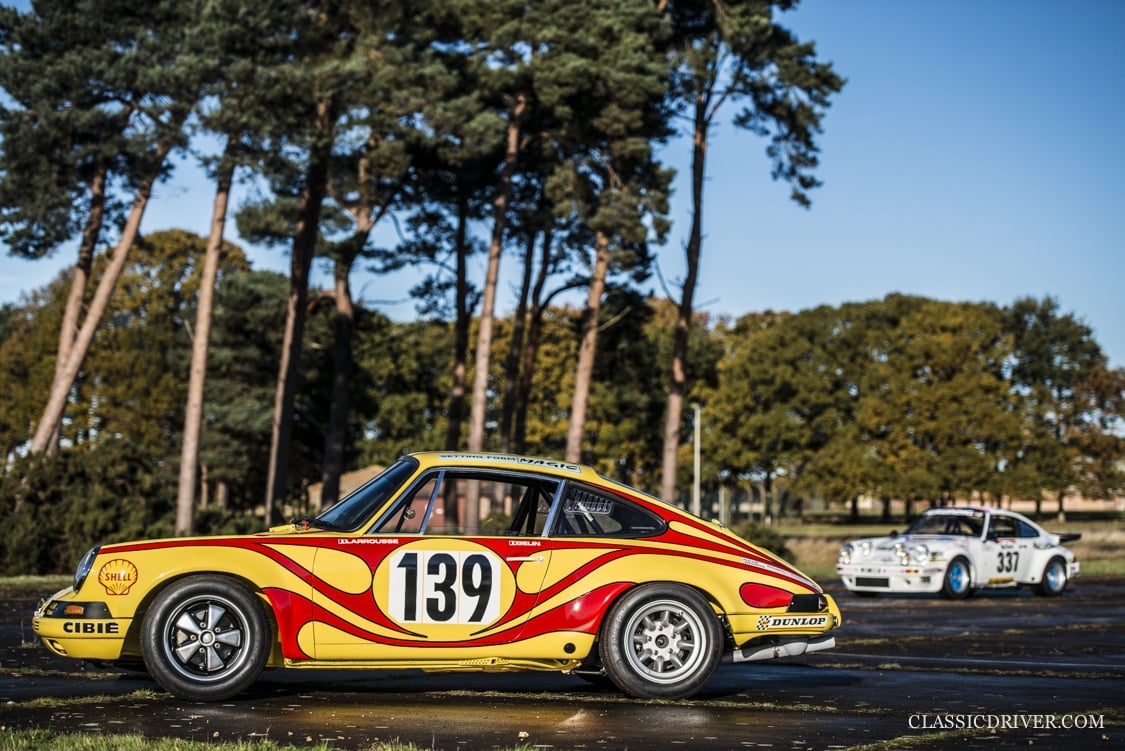
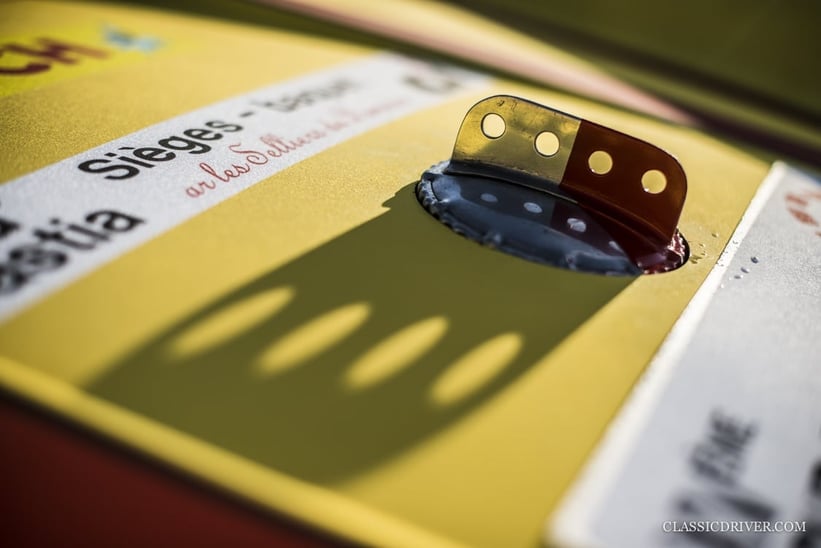
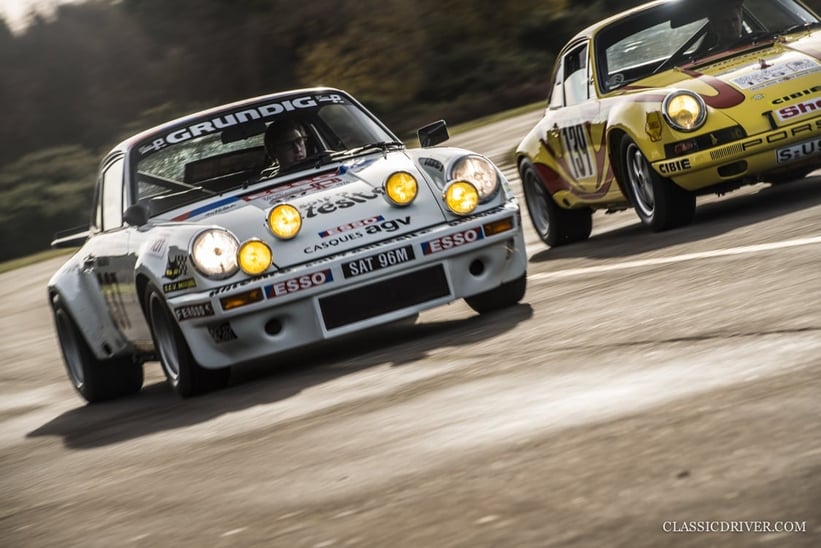
Say what you will of the Germans’ affliction for the French sparkling wine, but it clearly worked. Parts were drafted in from the 911 R, and almost every conceivable surface on the car, save for the bodywork, was drilled to within an inch of its life, even if it wasn’t strictly safe to do so. When it came to the great weigh-in, it eventually tipped the scales at just 780kg, despite the 15 litres of fuel in the tank to which the mechanics were entirely oblivious. This was, and still remains, the lightest 911 ever built by the factory. “It has the same power-to-weight ratio as the modern 911R”, comments Nick Morfett from marque specialist Historika, which beautifully restored both of these Porsches. We wouldn’t go as far as to say happy (he’s a racing driver, after all), but Larrousse was content.
French rules
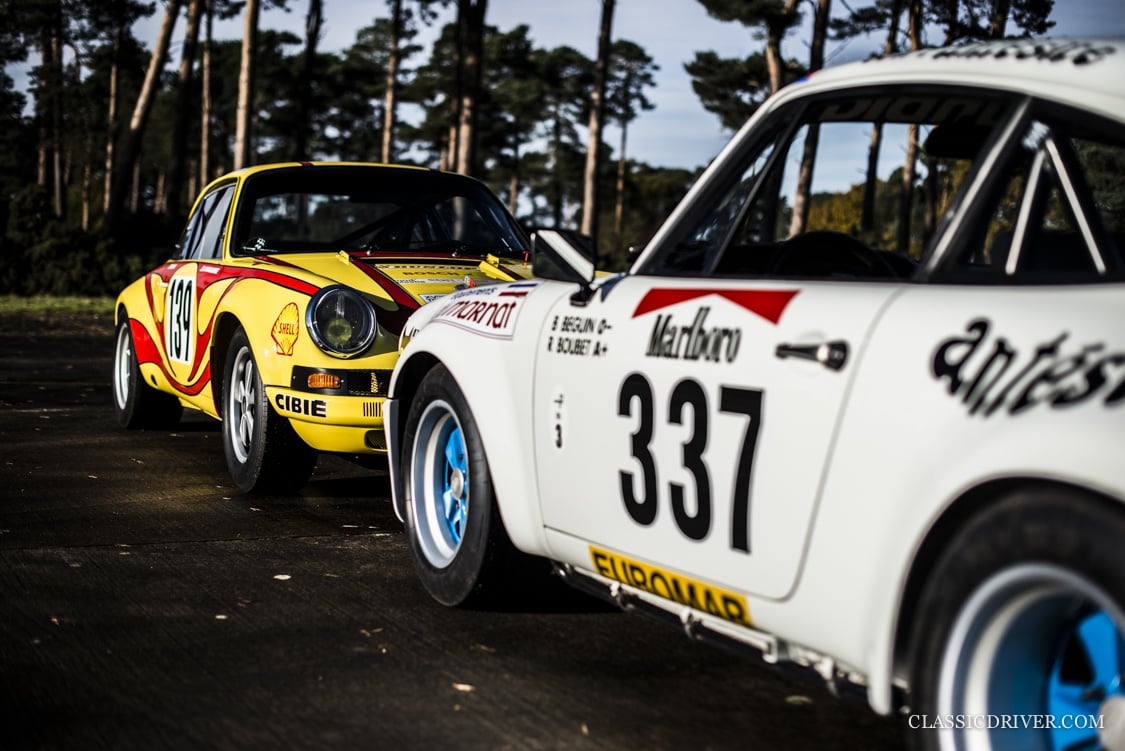
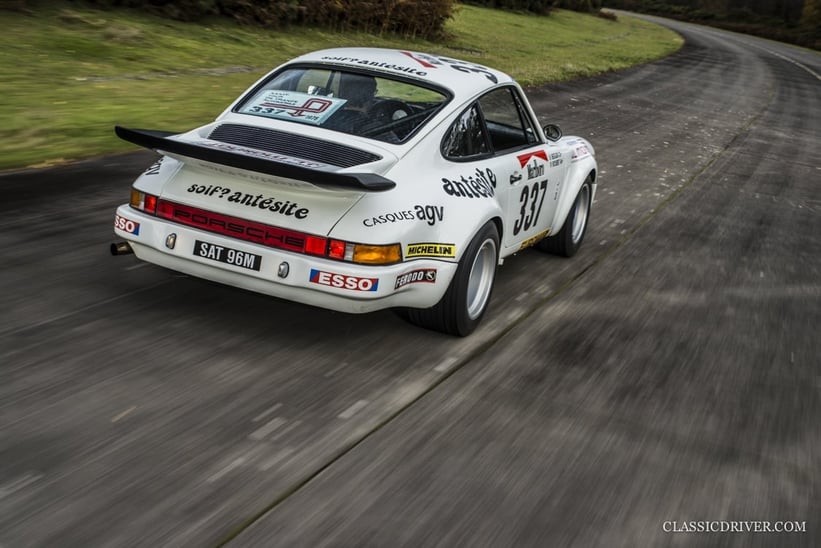
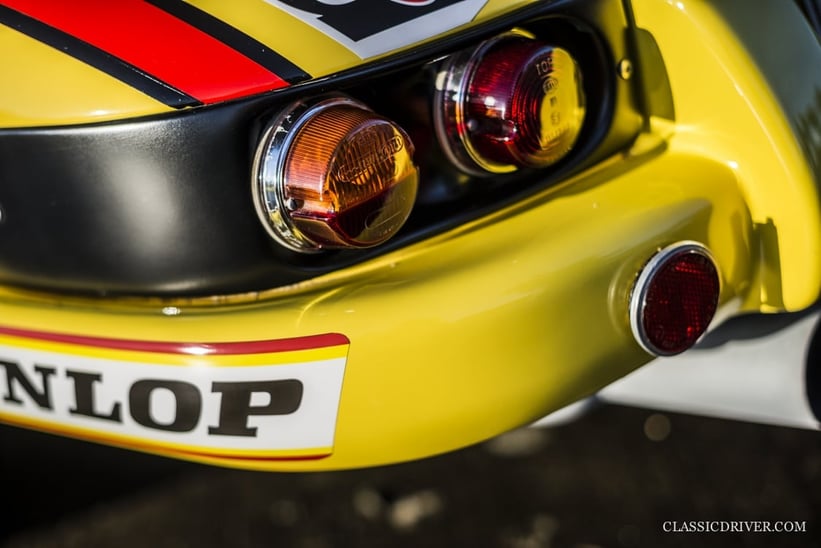
What neither Larrousse nor Porsche had bargained for was that a large proportion of the route had just been resurfaced by the French authorities, presumably so the spaceship-looking and ground-scraping Matra prototypes that were granted to run in the race — a contentious point in itself — would suffer no issues. Regardless, the 911’s versatility came to the fore, and Larrousse led the race right up until the final day, when a clutch issue forced him to drop to 3rd. “When we reunited Gérard Larrousse with the car, he said it felt like he’d driven it yesterday”, recalls Nick. “He was absolutely on it by the end of the day — we couldn’t get him to come in. For a 76-year-old man who hasn’t driven the car for 47 years, that was a truly remarkable thing to see!”
Deceptive appearances
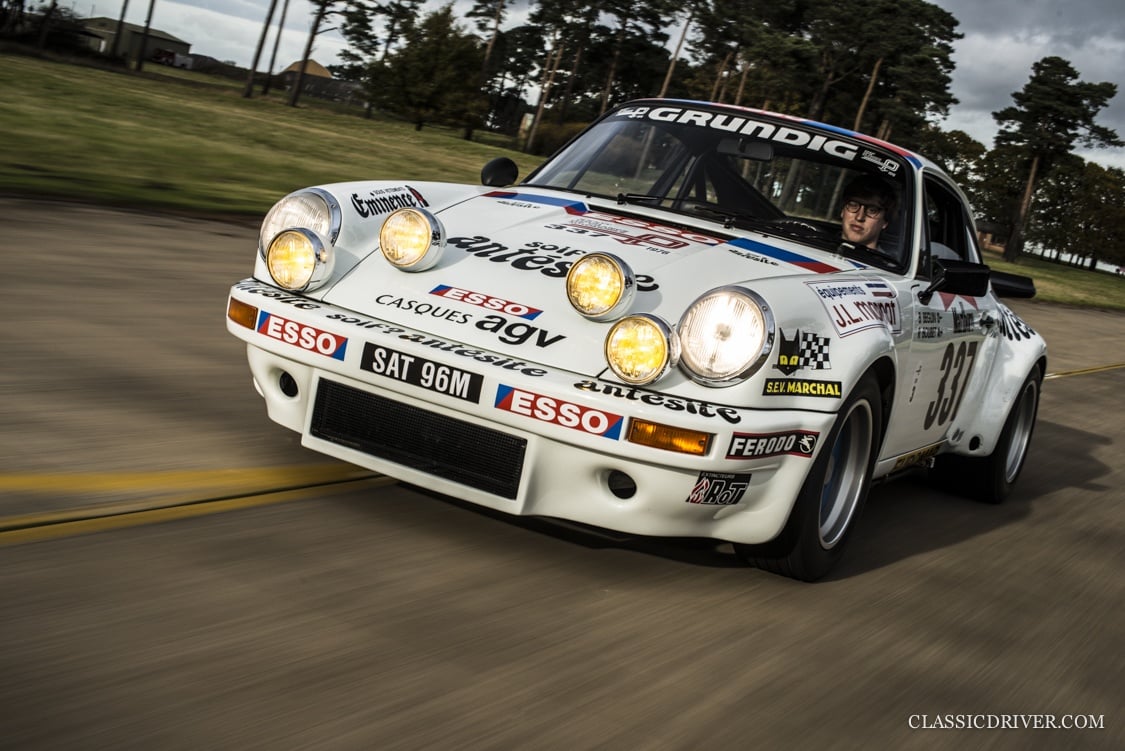
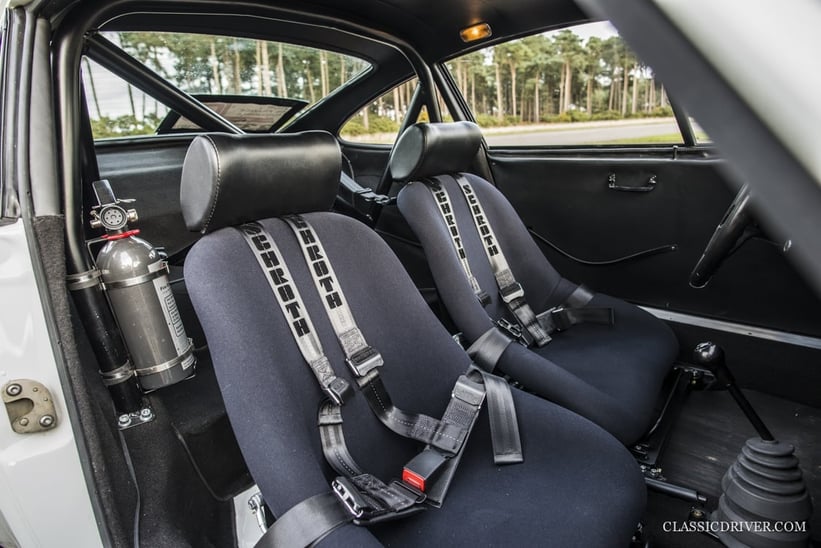

The comparatively swollen Carrera 3.0 RS, on the other hand, fared slightly better in the legendary event, finishing 2nd in 1976 in the hands of René Boubet and Bernard Béguin (though it did have two attempts prior, claiming 9th in 1974 and 3rd in ’75). “It’s a bit of a Tour de France Auto veteran, this car”, comments Nick, who is, if the ear-to-ear grin on his face is anything to go by, clearly relishing the chance to open the car up a little.
“It feels a lot more manageable than the ex-Larrousse 911ST, and certainly more comfortable. It’s quite like driving a 2.7 RS with a touch more power, and then, of course, you’ve got the suspension and brakes straight from the RSR racer. It’s just so good — an absolutely awesome machine.” Having competed in close to 200 races, rallies, and hill climbs for years after it was first delivered to Son Auto in Paris (including two Le Mans 24 Hours and a Monte-Carlo Rally), who are we to disagree?
The envy of the paddock
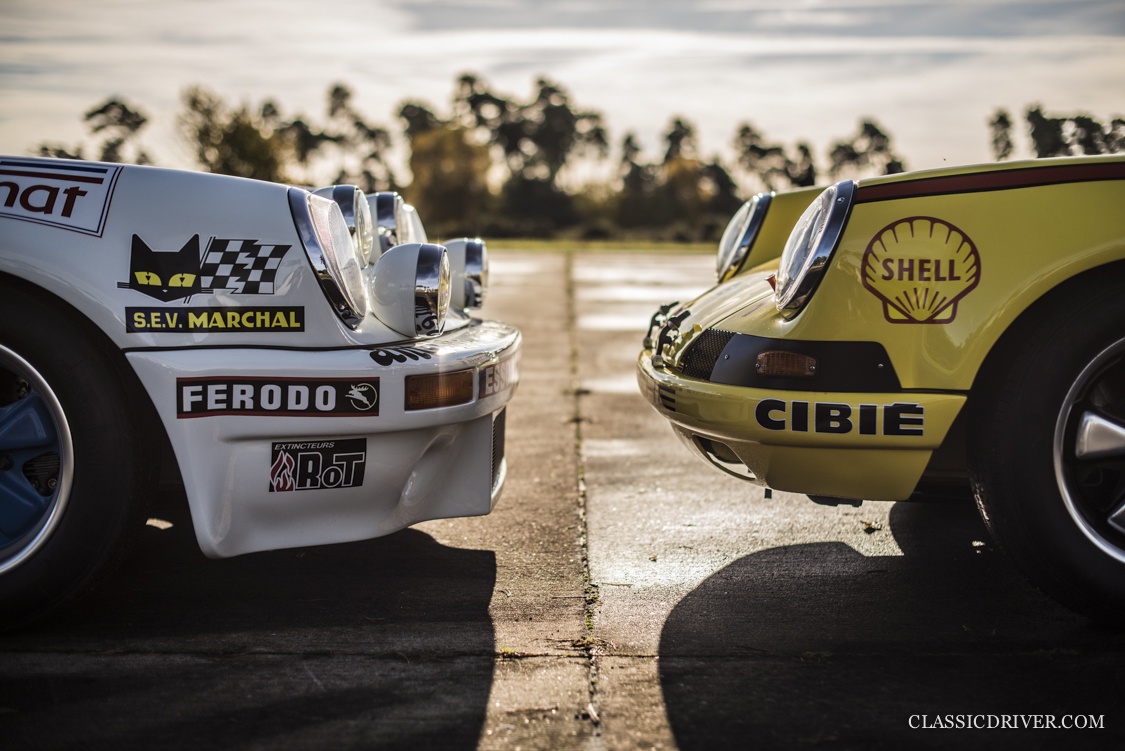
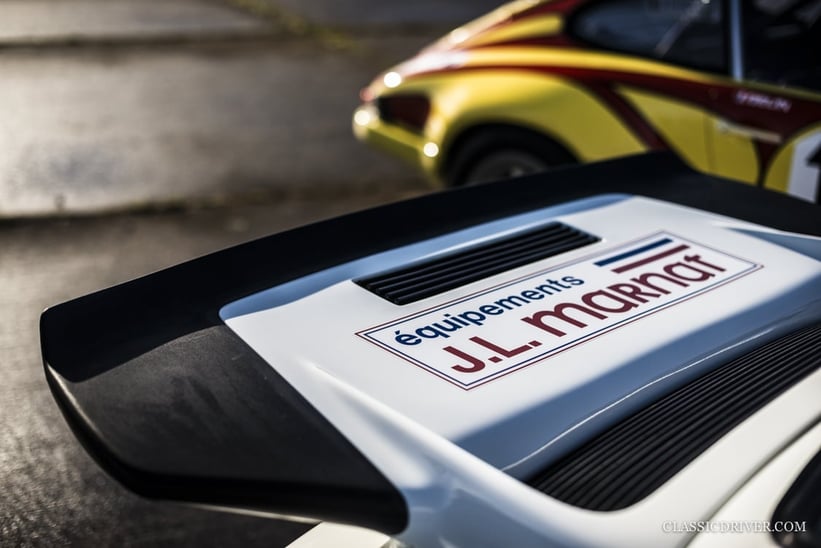
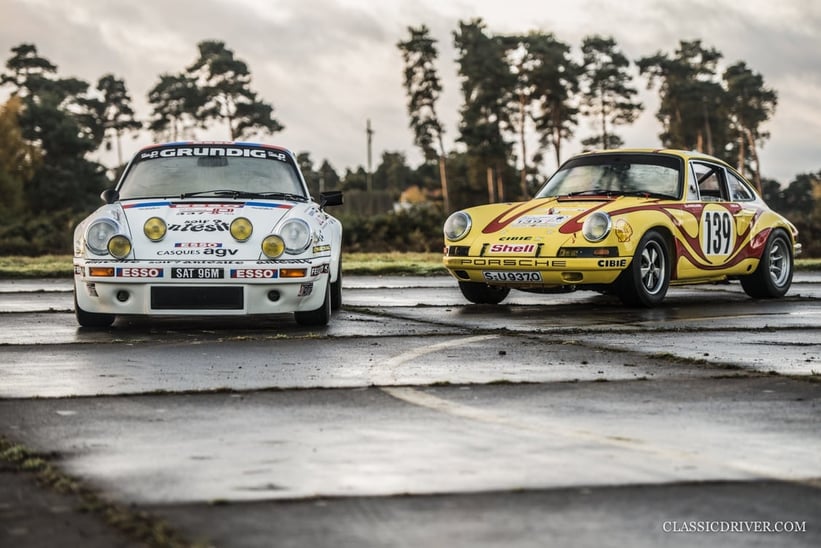
Nick also thinks that its usability — this is a homologated road car, after all — makes it the ideal weapon for the Tour Auto, whether competing for the outright spoils or simply spending an enjoyable week with friends. Besides, you’ll be the envy of all other competitors with that whale-tail spoiler that’s more than big (and flat) enough for a quintessentially French lunch spread. “When we were road-testing the car after its restoration, we instantly knew it could be used as a proper road car. It’s a credit to Porsche and how well it designed the 3.0 Carrera that it was still competitive long after its year of manufacture.
This pair of Porsches is as good a reminder as any of the legendary French road race. “We’re hoping that we’ll see both cars on the Tour Auto in the future, perhaps even with Larrousse at the wheel of the ST”, concludes Nick. Now, that’s something we’d never forget. The Tour de France Automobile might have since been overshadowed by the great cycling event, but those 230-odd competitors lucky enough to be snaking their way around France on the Tour Auto this week are experiencing one of the finest historic motoring events in the world, and they will no doubt leave with a newfound respect for those brave pilots who fought tooth-and-nail, non-stop for a staggering 10 days in period.
Photos: Rémi Dargegen for Classic Driver © 2017







































